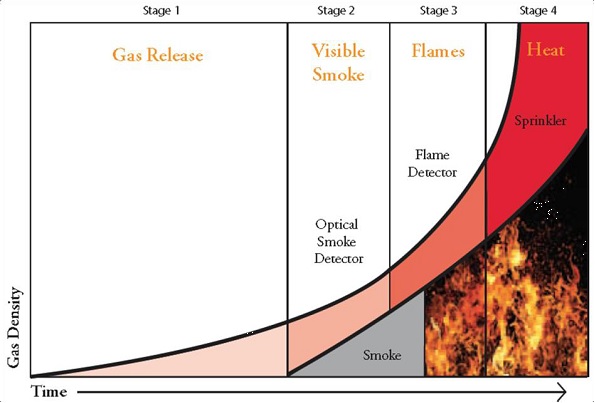State of the art fire safety systems are primarily designed to detect and respond to smoke, heat and IR/UV radiation. These elements are mainly present during the advanced stages of a typical fire cycle when the fire gases have been substantially released and the fire has already propagated to a large extent (Stage 2 and beyond in Figure A). As a result, the fire damage is typically large and building occupants can be exposed to harmful or toxic gases. Additionally, standard fire cells do not provide information about the location of people in the flaming building. There is thus a direct societal need for safety systems equipped with ultra-sensitive, reliable gas sensors for early fire detection, and accurate presence detection technology that allows to localize remaining occupants in the building.

The SAFESENS project will address the direct societal need for more reliable and earlier fire detection in combination with accurate occupancy detection. SAFESENS aims at achieving this goal with the co-integration of gas sensor and presence detection technologies, which should enable an enhanced safety and security of buildings, its occupants and safety workers.


